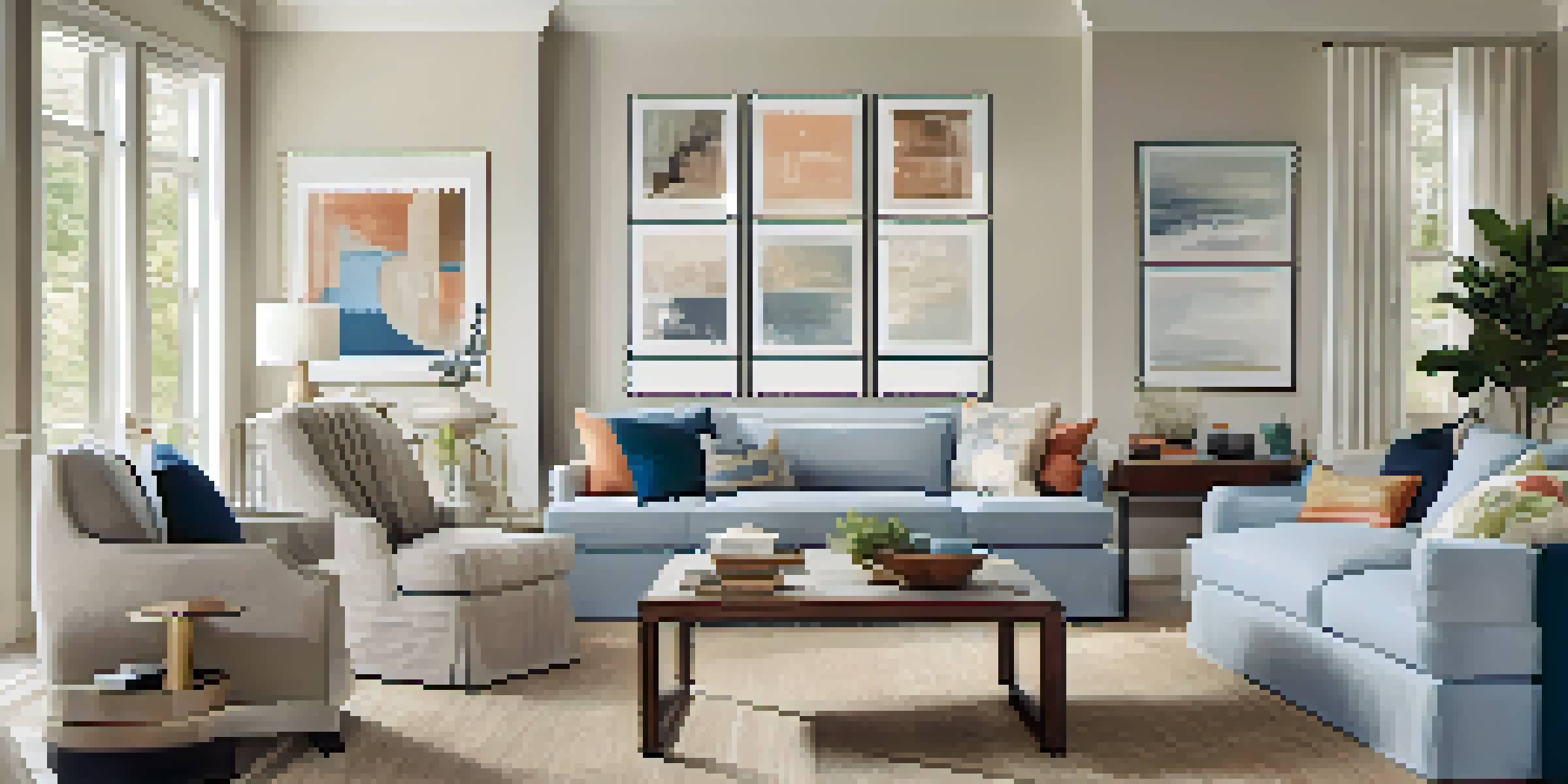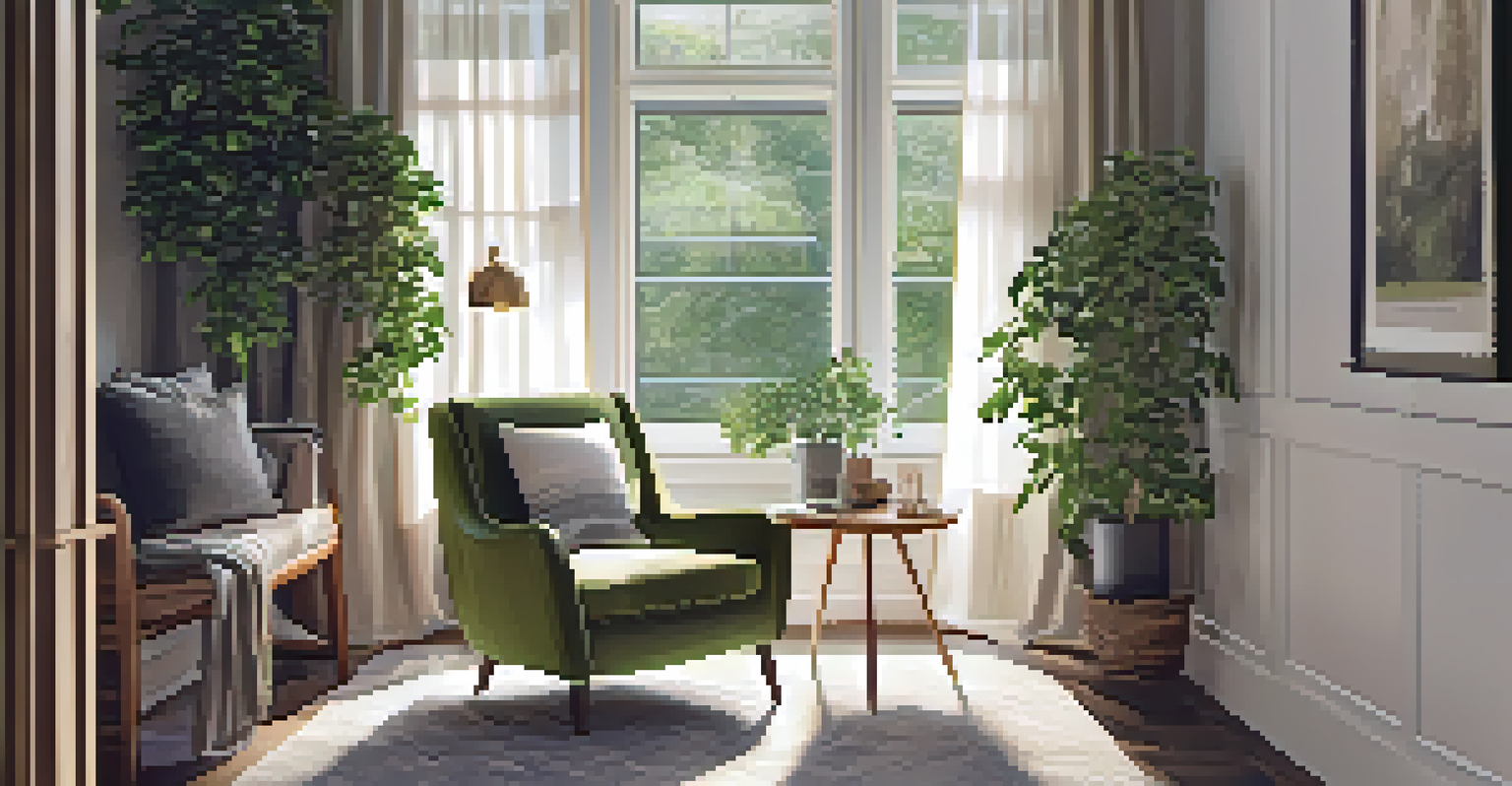Customizing Open Concepts for Personal Style

Understanding Open Concepts in Design
Open concepts in design refer to layouts that favor spaciousness and fluidity, often minimizing walls to create a more connected environment. This approach allows for free movement and a sense of unity among various spaces, making it ideal for modern living. However, while the open concept is inherently flexible, it can sometimes feel impersonal or generic without personal touches.
Design is not just what it looks like and feels like. Design is how it works.
To truly make an open concept space your own, the key lies in customization—infusing your unique personality into the design. This can be achieved through various elements like color schemes, furniture choices, and decorative details that resonate with your aesthetic. Think of it as dressing up a blank canvas, where your style becomes the artwork.
Ultimately, understanding the basics of open concepts allows you to navigate the vast array of customization options available. The goal is to transform a generic space into one that tells your story, reflecting who you are and how you live. Let's explore how to effectively customize these spaces in a way that feels authentic to you.
Choosing the Right Color Palette
Color can dramatically influence the mood and perception of an open space. Selecting a color palette that resonates with your personal style is essential; whether you favor calming neutrals or bold, vibrant hues, the right colors can create a cohesive look throughout the area. Consider how different colors evoke various feelings—soft blues can promote tranquility, while warm reds can energize a room.

One effective strategy is to choose a primary color for significant areas, such as walls or major furniture pieces, then complement it with accent colors in decor and accessories. This layered approach maintains harmony while allowing for personality to shine through. Additionally, using different shades of the same color can provide depth without overwhelming the senses.
Customize Your Open Concept Space
Infusing personal touches through color, furniture, and decor transforms an open concept into a space that reflects your unique style.
Remember, the beauty of an open concept is that you can easily transition between spaces. By carefully selecting a color palette that flows seamlessly from one area to another, you create a unified atmosphere that feels intentional and inviting. So grab that paintbrush or fabric swatch and let your creativity flow!
Selecting Functional Furniture That Fits Your Style
Furniture selection is crucial in customizing open concepts, as it serves both functional and aesthetic purposes. Opt for pieces that not only look great but also cater to your lifestyle needs. For instance, if you love hosting gatherings, a spacious sectional sofa can provide comfort while also facilitating social interaction.
The details are not the details. They make the design.
In an open concept design, it’s essential to choose furniture that complements the overall flow of the space. Consider multifunctional pieces like ottomans with storage, or dining tables that can extend for larger gatherings. This approach not only maximizes utility but also contributes to a seamless design without clutter.
Don’t shy away from showcasing your personality through your furniture choices. Whether it’s a vintage coffee table that sparks conversation or modern chairs that reflect your taste, each piece can tell a story. By carefully curating your furniture, you can create an environment that feels both stylish and functional.
Incorporating Personal Decor Elements
Decorative elements are the finishing touches that can really make an open concept space feel like home. From artwork to decorative pillows, these items allow you to express your personal style and interests. Think about incorporating pieces that have meaning to you, whether they are family heirlooms or travel souvenirs that remind you of adventures.
A great way to introduce decor is through a gallery wall that showcases your favorite photos or art pieces. This not only adds visual interest but also creates a focal point in the open space. Additionally, consider using plants as decor; they bring life and freshness, while also providing a natural element that enhances the ambiance.
Create Functional Zones Within Spaces
Using strategic furniture placement and decor can help define distinct areas in an open concept layout while maintaining unity.
The key is to strike a balance between personal touches and maintaining a cohesive look. Too many disparate items can lead to visual chaos, while too few can make the space feel barren. Aim to curate a selection of decor that reflects your personality, creating a warm and inviting atmosphere that feels uniquely yours.
Creating Distinct Zones Within Open Spaces
One of the challenges of open concept design is creating distinct areas that serve different functions, while still maintaining an overall sense of unity. Using furniture arrangement, rugs, or even room dividers can help define these zones without sacrificing the openness of the space. For instance, a large area rug can visually separate a living area from a dining space.
Consider using furniture placement strategically to create visual boundaries. For example, you could position a sofa to delineate the living area from a workspace. This method not only provides definition but also encourages a natural flow between different activities, making the space feel functional and organized.
Remember, each zone can still reflect your personal style, even while serving different purposes. By thoughtfully considering how each area ties into the overall design, you can create a harmonious environment that feels both cohesive and tailored to your lifestyle.
Lighting Choices That Enhance Your Style
Lighting plays a pivotal role in how an open concept space feels and functions. Choosing the right lighting fixtures can enhance your personal style and set the mood for different areas. For instance, pendant lights over a dining table can create an intimate atmosphere, while brighter overhead lighting can help energize a workspace.
Layering different types of lighting—ambient, task, and accent—can help you achieve a dynamic look. Ambient lighting provides overall illumination, while task lighting focuses on specific areas, like reading nooks or kitchen counters. Accent lighting can highlight artwork or architectural features, adding depth and interest to the design.
Enhance Style with Lighting Choices
Selecting the right lighting fixtures and layering different types can enhance both the functionality and aesthetic of your open space.
Don’t forget that lighting fixtures themselves can be statements of style. From sleek, modern designs to vintage-inspired pieces, the right lighting can serve as both a functional necessity and a stunning decor element. As you plan your lighting, think about how each choice contributes to the overall aesthetic and atmosphere of your open concept space.
Personalizing Open Spaces with Textiles
Textiles are an excellent way to add warmth and comfort to an open concept space while also showcasing your personal style. Think about incorporating various fabrics through curtains, cushions, throws, and rugs, which can introduce color, texture, and patterns that reflect your taste. This layer of softness can make even the most modern designs feel inviting.
When selecting textiles, consider how they interact with other elements in the space. Mixing and matching patterns can create visual interest, but it’s important to maintain a sense of balance. For example, if you have bold patterns on your curtains, you might want to choose solid colors for your cushions to avoid overwhelming the eye.

Additionally, textiles are easy to update, allowing you to refresh your space without a complete overhaul. By swapping out seasonal throws or changing cushion covers, you can easily adapt your decor to reflect your evolving style. So don’t underestimate the power of textiles in personalizing your open concept design!